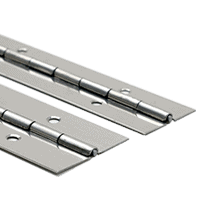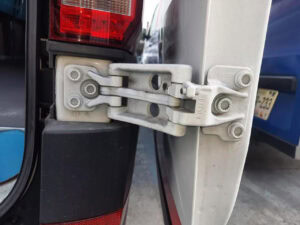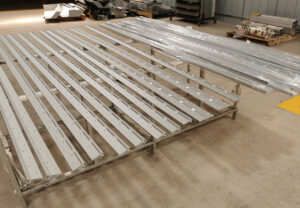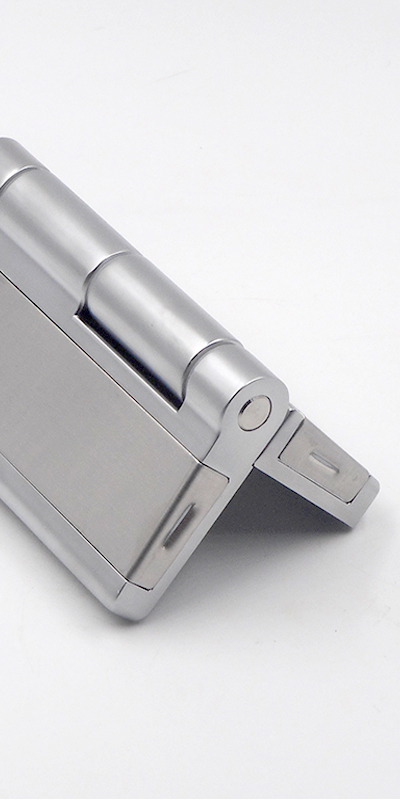Living hinges offer a cost-effective, flexible solution in industrial product designs—without relying on traditional metal hinges.
Living hinges are typically made from polypropylene, polyethylene, or alloyed polymers, with polypropylene being the most durable and flexible for repeated use in industrial applications.
Let’s explore the materials and design principles that make industrial living hinges effective and durable.
What Is a Living Hinge and How Does It Differ from Traditional Plastic Hinges?
Living hinges are single-piece, flexible components that allow rotation or bending between two rigid sections, often formed during injection molding.
Unlike traditional plastic or metal hinges that rely on pins or knuckles, living hinges are molded as a unified part using flexible thermoplastics.
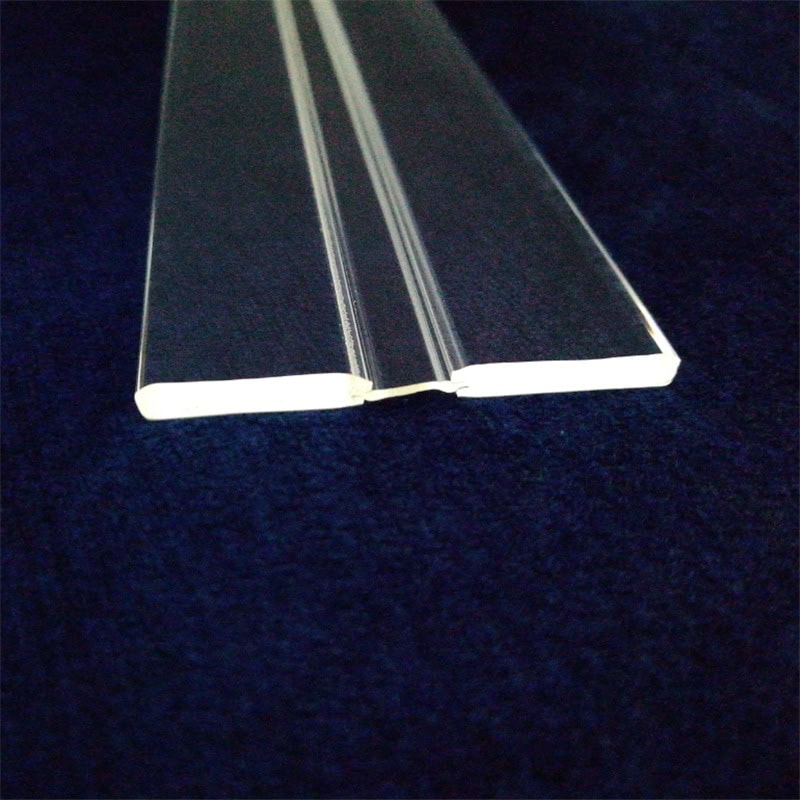
Structural Simplicity and Application Advantages
A living hinge typically joins two sections of a product, such as a lid and base, enabling hundreds of thousands of bends without breaking. In manufacturing, living hinges reduce part count, streamline assembly, and improve strength through integrated design.
This design is ideal in enclosed plastic housings like climatic test chamber hinges or toolboxes, where frequent access is necessary without metal parts. They eliminate fasteners and reduce failure points—making them an efficient solution in many industrial applications, especially where environmental sealing and weight reduction are key.
Why Polypropylene Is the Most Recommended Material for Living Hinges
Polypropylene is widely recognized as the gold standard for living hinge materials in manufacturing.
Polypropylene can endure over a million flex cycles without breaking, making it the top choice for living hinges used in industrial and high-repetition environments.
Outstanding Fatigue Resistance and Versatility
Due to its excellent fatigue resistance, polypropylene allows designers to create flexible hinges that won’t degrade under mechanical stress. It also resists moisture, chemicals, and UV rays, which is essential in outdoor or exposed industrial equipment—like outdoor industrial hinges. Its resilience ensures long-term durability, particularly in tough factory conditions or mobile containers like trailer units.
This makes it highly suitable for applications such as trailer door hinges, which need to perform reliably across extreme temperatures and repeated operation cycles.
How Alloyed Polymers Improve Durability in High-Stress Applications
Some applications demand even more than what pure polypropylene can offer, leading manufacturers to use alloyed polymers.
Alloyed polymers blend different thermoplastics to balance flexibility, impact resistance, and temperature tolerance in living hinge designs.
Enhanced Customization with Engineered Materials
Polypropylene can be alloyed with materials like polyethylene or thermoplastic elastomers to improve elasticity or environmental resistance. For example, combining polypropylene with ethylene-vinyl acetate can increase cold-weather flexibility, essential for enclosures exposed to freezing temperatures, such as cold storage room hinges.
Alloyed polymers offer a tailored approach—enhancing properties like flame resistance or stiffness without sacrificing hinge longevity. This customization opens new possibilities for hinge integration into precision tools, lab equipment, or testing devices requiring both mechanical precision and environmental resilience.
When to Use Polyethylene for Living Hinges and Its Limitations
Polyethylene is often used when cost is a major consideration or flexibility is more critical than fatigue strength.
Polyethylene living hinges offer weather resistance and cost advantages but are not suitable for high-cycle or load-bearing applications.
Targeted Use in Low-Cycle Industrial Designs
While polyethylene can perform well in moderate-use environments, it doesn’t match polypropylene’s resistance to fatigue. This means it’s best used in static enclosures or one-time-use products like packaging or disposable containers. It’s also useful for creating initial prototypes before scaling to more durable materials.
Its flexibility makes it a secondary option in sealed control panels or temporary field enclosures—places where the lid is opened infrequently. However, it’s not ideal for equipment like heavy duty hinges or constant access panels that demand mechanical robustness.
Material Fatigue Resistance: Why It Matters in Industrial Settings
In industrial applications, failure due to fatigue is one of the biggest concerns when selecting a hinge material.
Fatigue resistance defines how many times a hinge can flex before it starts to crack or break—critical in long-life industrial products.
Comparing Flex Life Among Common Hinge Materials
Let’s compare key materials in terms of flex durability, cost, and chemical resistance:
| Material | Estimated Flex Cycles | Chemical Resistance | UV Resistance | Cost |
|---|---|---|---|---|
| Polypropylene | >1,000,000 | Excellent | Good | Low |
| Polyethylene | <200,000 | Good | Fair | Very Low |
| ABS | <100,000 | Moderate | Poor | Medium |
| Alloyed Polymers | 300,000 – 700,000 | Customized | Customized | Medium-High |
Polypropylene clearly offers the best balance between cost and performance, especially in high-use environments like equipment access panels or mobile enclosures where detachable hinges are commonly used.
Common Manufacturing Processes for Living Hinges in Mass Production
Manufacturers prefer processes that align with high repeatability and precision—making injection molding the go-to method for living hinges.
Injection molding enables living hinges to be formed as a single piece with consistent quality and tight tolerances.
Why 3D Printing Isn’t Ideal for Production
While 3D printing is useful for prototypes, its layer-based build often lacks the molecular alignment required for hinge durability. Injection molding, on the other hand, promotes molecular flow in the hinge zone, increasing its lifespan.
This is why companies using industrial hinge production base prefer injection molds with automated gating and optimized flow paths to produce high-volume, defect-free living hinges.
What Is a Living Hinge Design Template and How to Use It
Using a design template helps engineers avoid common mistakes in hinge placement, thickness, and mold flow.
A living hinge template includes dimension recommendations for optimal flexibility, fatigue life, and manufacturability.
Standardization in Industrial Design
Designing a hinge with a radius of 0.25–0.4 mm and thickness between 0.2–0.4 mm ensures consistent performance. A well-structured template saves time in CAD modeling and is vital when integrating into components like electronic housings or box lids, reducing iterations in the mold development phase.
When combined with smart mold flow analysis, these templates can reduce lead time and enhance hinge reliability in commercial products such as portable enclosures or battery compartments.
Living Hinge DXF and Laser Cutting: Pros and Cons
Laser cutting is sometimes used to prototype hinge shapes or test fitment in thermoplastic sheets.
While laser cutting can define hinge patterns, it does not impart the material properties necessary for long-life flexing.
DXF Files and Prototyping Utility
Designers use DXF files to test hinge geometry quickly. Laser-cut samples are excellent for form studies and mechanical mock-ups, but they lack molecular orientation—leading to crack formation after just a few cycles. They’re best for visualization, not for functional testing.
In contrast, machined living hinges using injection molding retain their mechanical properties even after prolonged flexing, which is vital for durable components like aluminum hinges or custom-fit industrial panels.
Common Applications in Industrial Products: From Enclosures to Clamshells
Living hinges are a popular choice for enclosed equipment and consumer-facing plastic housings where mechanical simplicity and space saving are critical.
Industrial uses of living hinges include test instrument cases, sample containers, clamshell housings, and electronic enclosures.
Product Integration Examples
A great example is a clamshell shoe container with a living hinge—durable, light, and often mass-produced. Similarly, electronic testing devices or component storage boxes often use integrated living hinges to reduce cost and ensure easy access.
These are increasingly being used in harsh environments, replacing corrosion resistant hinges or metallic solutions that may require secondary assembly. With correct design, living hinges serve across industrial sectors—providing functionality with minimal moving parts.
Key Disadvantages of Living Hinges You Should Know Before Choosing
Despite their benefits, living hinges have limitations that must be considered in engineering design.
Living hinges are not suitable for high-load, high-heat, or complex movement applications.
Environmental Sensitivity and Load Limits
They are susceptible to extreme cold or UV degradation unless properly stabilized. Also, excessive thickness or poor flow during molding can lead to premature failure. When a rigid and high-load bearing function is needed, traditional options like butt hinges or weld on hinges may be a better fit.
As a result, designers must balance application demands with material capability and environmental factors before finalizing hinge selection.
Conclusion
Polypropylene remains the top material for industrial living hinges, offering unmatched fatigue resistance, durability, and environmental performance—essential for high-usage and cost-sensitive applications in modern manufacturing.

